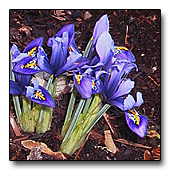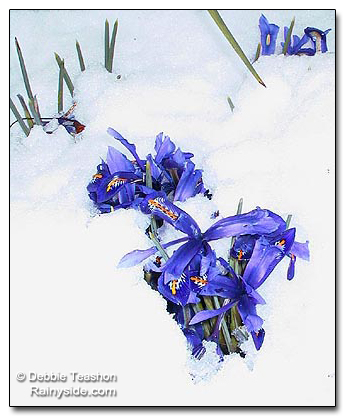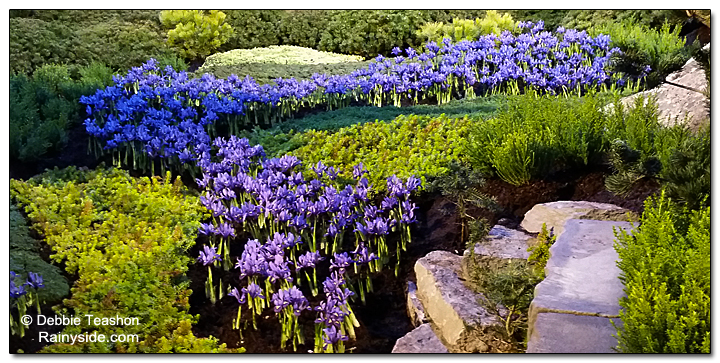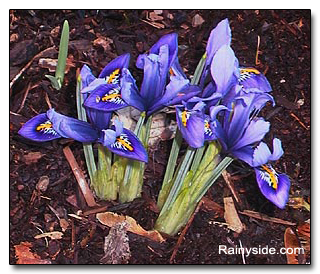Iris reticulata
RETICULATA IRIS
Family: Iridaceae
Pronounced: EYE-riss reh-tik-yew-LAY-tah

Quick Jumps
Growing Guide
Rainy Side Notes
GROWING GUIDE

Origin:
Caucasus, Turkey, Iraq, Iran.
Plant Group:
Bulbs.
Hardiness:
Sunset zones: All zones.
USDA zones: 5-8.
Mature size:
Height: 4-6 inches (10-15 cm).
Flowering period:
Late January to mid February.
Flowering attributes:
Bluish-purple with a yellow central ridge; flowers have a violet scent.
Leaf attributes:
Four sided leaf with a blue-green coloring.
Light:
Full sun.
Soil:
Well-drained, neutral to slightly acidic pH.
Feeding:
I top dress with compost in autumn.
Propagation Methods:
Divide bulbs when dormant to increase stock, and when flower quality declines.
Rainy Side Notes


If you regularly attend the Northwest Flower & Garden Festival, you know this flower, which designers often use in the display gardens. The Iris blooms dependably from January to February, making it a reliable bulb to force for the show.
When planted in large drifts, the tiny Iris is a winter feast for the eyes. The Iris often blooms at the same time as crocus, and is much welcome color during the colder days of the year. When it snows, the incredible tiny flowers pop up during the melt with a startling look-at-me when it peaks out from under a sea of white. The sweet violet-scented flowers carry a fresh spring fragrance.
Plant bulbs with Blechnum spicant (deer fern), or other small, evergreen ferns, and Carex 'Bowles Golden'.
The plants need full sun, well-drained soil, and grow fine in a rock garden. Divide bulbs when dormant to increase stock, or when flower quality declines. Plant them 3 inches deep and 3 inches apart.

Iris reticulata in a display garden at the Northwest Flower & Garden Festival.

Gardening for the Homebrewer: Grow and Process Plants for Making Beer, Wine, Gruit, Cider, Perry, and More
By co-authors Debbie Teashon (Rainy Side Gardeners) and Wendy Tweton
Copyright Notice | Home | Search | Bulbs

